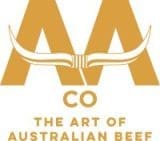
AUSTRALIAN Agricultural Co shares took a significant hit yesterday, falling seven percent on a day of particularly active sell-downs.
Either directly or indirectly, the stock’s performance appears to be related to the deterioration in the cattle market and flat international beef trading conditions.
 AA Co shares closed at $1.35 yesterday, down 10c on the previous day, to reach their lowest point since June 2021. The share price has ranged as high as $1.96 over the past 12 months.
AA Co shares closed at $1.35 yesterday, down 10c on the previous day, to reach their lowest point since June 2021. The share price has ranged as high as $1.96 over the past 12 months.
As the 12-month share price graph published above shows, yesterday produced an abrupt downturn, after a period of gentle deterioration on low share trading during August.
Market watchers say the persistent decline in cattle markets and deteriorating seasonal conditions was behind the broader trend seen over the past four weeks.
But yesterday’s drop was much more dramatic. As can be seen on the second graph below, it coincided with an unusually high sell-down of stock (the colours – red or green indicates the price trend, down or up). Yesterday saw around 2.3 million AA Co shares traded, up from a daily average of only a couple of hundred thousand or less over the previous three months.

Daily trading volume over the past three months
S&P/ASX 300 Index
The key reason behind the shares’ performance appears to be that as of Friday, AA Co’s stock has been removed from the influential S&P/ASX 300 Index.
The S&P/ASX Australian Indices measure the performance of ASX-listed companies across various sizes, industries, themes, and strategies. The particular S&P/ASX 300 index measures the performance of 300 of the largest, highly liquid securities listed on the ASX by float-adjusted market capitalisation. This means a $100m company with a 50pc shareholder will be treated the same as a $50 million company.
The index is re-balanced quarterly, and from 1 September, AA Co (plus seven other companies) were pushed off the index by another eight expanding listed companies, based on market capitalisation and liquidity.
The ASX yesterday had AA Co’s market capitalisation listed at $874 million.
The main issue behind AA Co’s share price decline yesterday was the impact the removal from the 300 Index made on ‘passive’ funds and ‘index’ funds.
“If a fund uses a formula that tracks the S&P 300, it will need to sell the companies that are dropped off the list, and buy the companies that are added,” a keen stock watcher told Beef Central yesterday.
Other fund models may focus on smaller ‘mid-cap’ stocks, which AA Co may not now fit.
“In summary, the adjustments to the list on Friday mean less institutional investors will ‘need’ to own AA Co shares, based on their S&P 300 formula, and the price may suffer,” the stock watcher told Beef Central.
“It is definitely a minor negative for the company.”
That formula-based stock selection model can be clearly seen in the hefty sell-off of AA Co stock that happened yesterday.
